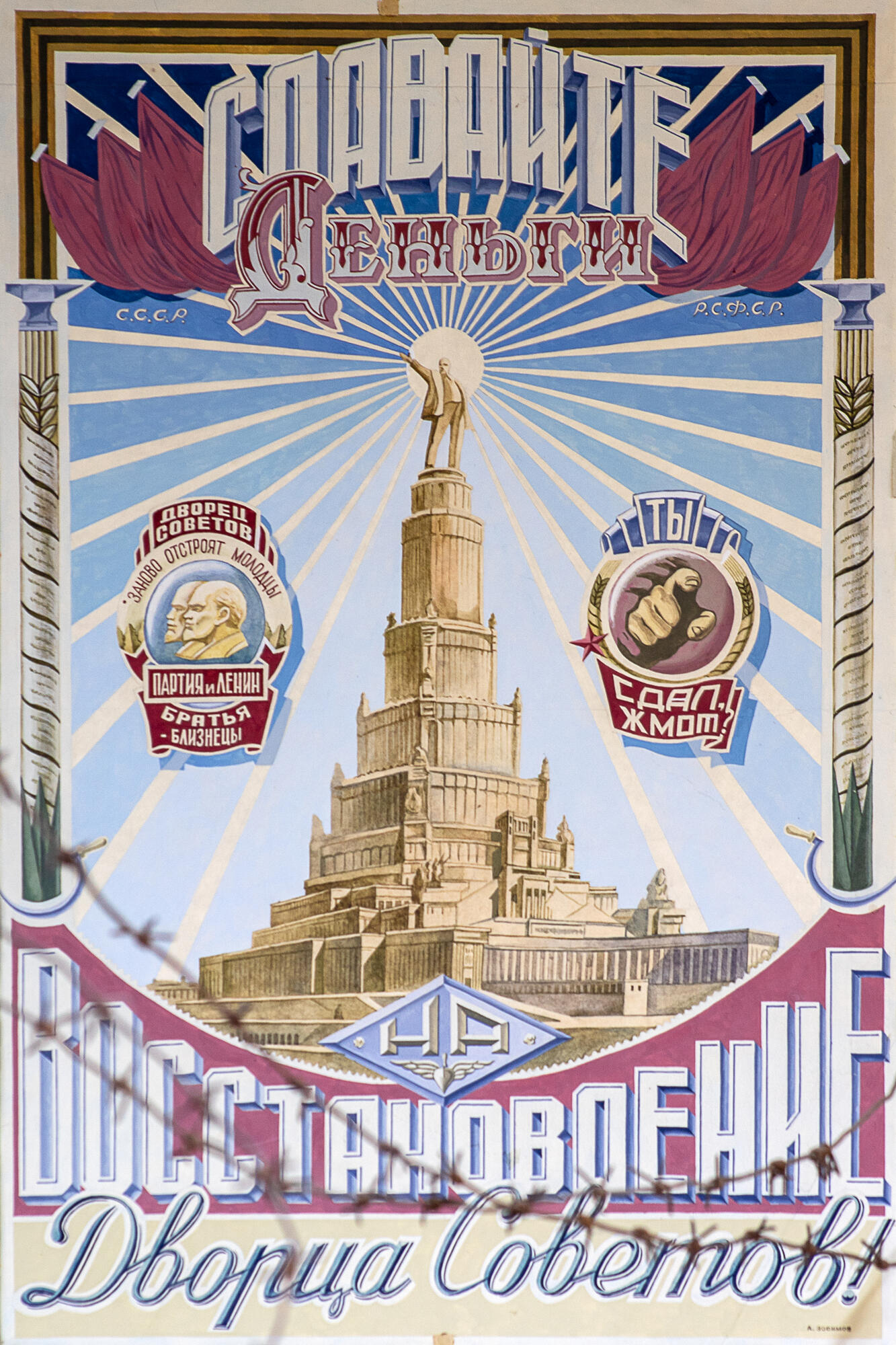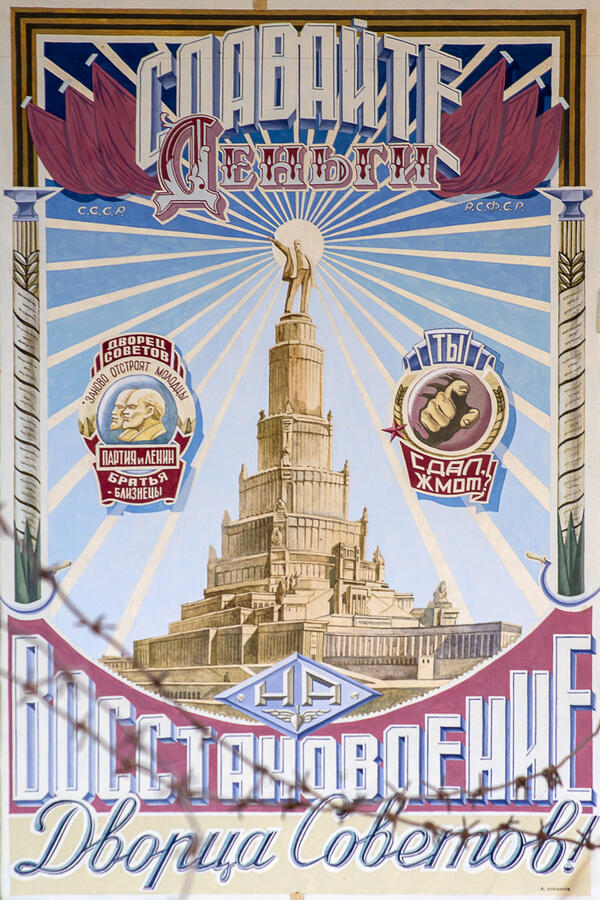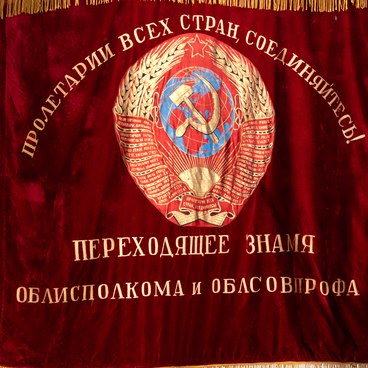The museum’s collection includes a poster depicting the largest unfinished Stalin’s skyscraper — the Palace of the Soviets. The poster was created by Alexander Zossimov, an artist, architect, and representative of the ‘paper architecture’ movement. A hundred copies of the poster were printed for the Russian pavilion at the 1996 Venice Biennale of Architecture.
The ‘paper architecture’ movement depicted architectural designs that could never be realized due to their high costs or technical complexity. Often, such works were aimed to criticize the existing architectural trends and to visualize the future of architecture.
In the center of the poster, the artist depicted the Palace of the Soviets, surrounded by the slogan ‘Donate to the Construction of the Palace of the Soviets! ’. Under the upper part of the slogan, there are the USSR and the RSFSR abbreviations, and to the sides of the Palace, there are medallions imitating military orders. The left medallion shows two Lenin’s profiles and is surrounded with ribbons featuring an inscription, “The Palace of the Soviets will be built this time. By our great twin brothers — Lenin and the Party”. The right medallion has a finger pointing at the viewer, just like in the famous “Have You Volunteered?” poster. The ribbons around the medallion say, “Have You Donated, You, Cheapskate?”.
To the side of the poster’s title, there are red banners with ax-shaped toppers. To the sides, there are columns wrapped by ribbons with the same inscriptions all over them saying ‘Unite, All Workers! ’. Thus, Zossimov imitated Soviet propaganda posters of the 1930s–1950s, while also ironically reinterpreting the symbols of the Soviet era.
According to the final design, the total height of the Palace was supposed to reach 420 meters. The architects aimed to make it even larger than the Empire State Building that was the world’s tallest building. The construction began on the site of the demolished Cathedral of Christ the Savior. During the Great Patriotic War, the construction stopped and was never resumed. Later, the Moskva swimming pool was built on its place, and in the 1990s, the Cathedral of Christ the Savior was rebuilt on that site.
The ‘paper architecture’ movement depicted architectural designs that could never be realized due to their high costs or technical complexity. Often, such works were aimed to criticize the existing architectural trends and to visualize the future of architecture.
In the center of the poster, the artist depicted the Palace of the Soviets, surrounded by the slogan ‘Donate to the Construction of the Palace of the Soviets! ’. Under the upper part of the slogan, there are the USSR and the RSFSR abbreviations, and to the sides of the Palace, there are medallions imitating military orders. The left medallion shows two Lenin’s profiles and is surrounded with ribbons featuring an inscription, “The Palace of the Soviets will be built this time. By our great twin brothers — Lenin and the Party”. The right medallion has a finger pointing at the viewer, just like in the famous “Have You Volunteered?” poster. The ribbons around the medallion say, “Have You Donated, You, Cheapskate?”.
To the side of the poster’s title, there are red banners with ax-shaped toppers. To the sides, there are columns wrapped by ribbons with the same inscriptions all over them saying ‘Unite, All Workers! ’. Thus, Zossimov imitated Soviet propaganda posters of the 1930s–1950s, while also ironically reinterpreting the symbols of the Soviet era.
The Palace of the Soviets was a famous unfinished construction project in Moscow. The construction of the administrative center started before World War II. It was designed to house sessions of the Supreme Soviet, festivities, and other events. The Palace was intended to become the ninth and the main Stalin’s skyscraper, the pinnacle of all high-rise construction in the USSR and the world’s tallest structure. The 100-floor building would have been crowned with a huge statue of Vladimir Lenin.
According to the final design, the total height of the Palace was supposed to reach 420 meters. The architects aimed to make it even larger than the Empire State Building that was the world’s tallest building. The construction began on the site of the demolished Cathedral of Christ the Savior. During the Great Patriotic War, the construction stopped and was never resumed. Later, the Moskva swimming pool was built on its place, and in the 1990s, the Cathedral of Christ the Savior was rebuilt on that site.



